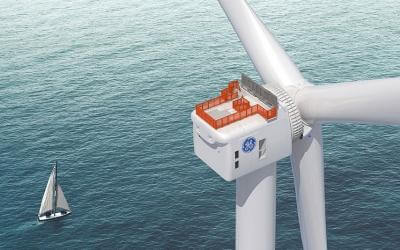GE scientists have been authorized by the U.S. government to access one of the world’s fastest supercomputers to advance offshore wind power, which could be a significant part of the wind energy sector that is projected to provide 20% of all U.S. energy needs in the next 10 years.
GE engineers – led by Jing Li, an aerodynamics engineer at GE Research – have been granted access to the Summit supercomputer at Oak Ridge National Laboratory (ORNL) in Tennessee, through the U.S. Department of Energy’s (DOE) competitive Advanced Scientific Computing Research Leadership Computing Challenge (ALCC) program. The goal of this effort, just launched, is to use supercomputer-driven simulations to conduct otherwise infeasible research that will lead to improved efficiencies in offshore wind energy production.
As part of the project, the GE team will work closely with research teams at NREL and ORNL to advance the ExaWind platform. One of the applications of the DOE’s Exascale Computing Project (ECP), ExaWind focuses on the development of computer software to simulate different wind farm and atmospheric flow physics. These simulations provide crucial insights for engineers and scientists to better understand wind dynamics and their impact on wind farms.
“ExaWind’s development efforts are building progressively from predictive petascale simulations of a single turbine to a multi-turbine array of turbines in complex terrain,” says Doug Kothe, director at the ECP.
“The ExaWind goal is to establish a virtual wind plant testbed that aids and accelerates the design and control of wind farms, informing our ability to predict the response of these farms to a given atmospheric condition. ECP is fortunate to have ExaWind in its portfolio of application projects, and fully supports its goals and aggressive development plans, which will not be easy to achieve. But these sorts of stretch scientific goals are what ECP is about,” he adds.
The key focus of this supercomputing project will be to study coastal low-level jets, which produce a distinct wind velocity profile of potential importance to the design and operation of future wind turbines. Using the Summit supercomputer system, the GE team will run simulations to study and inform new ways of controlling and operating offshore turbines to best optimize wind production.
Original source: North American Wind Power
